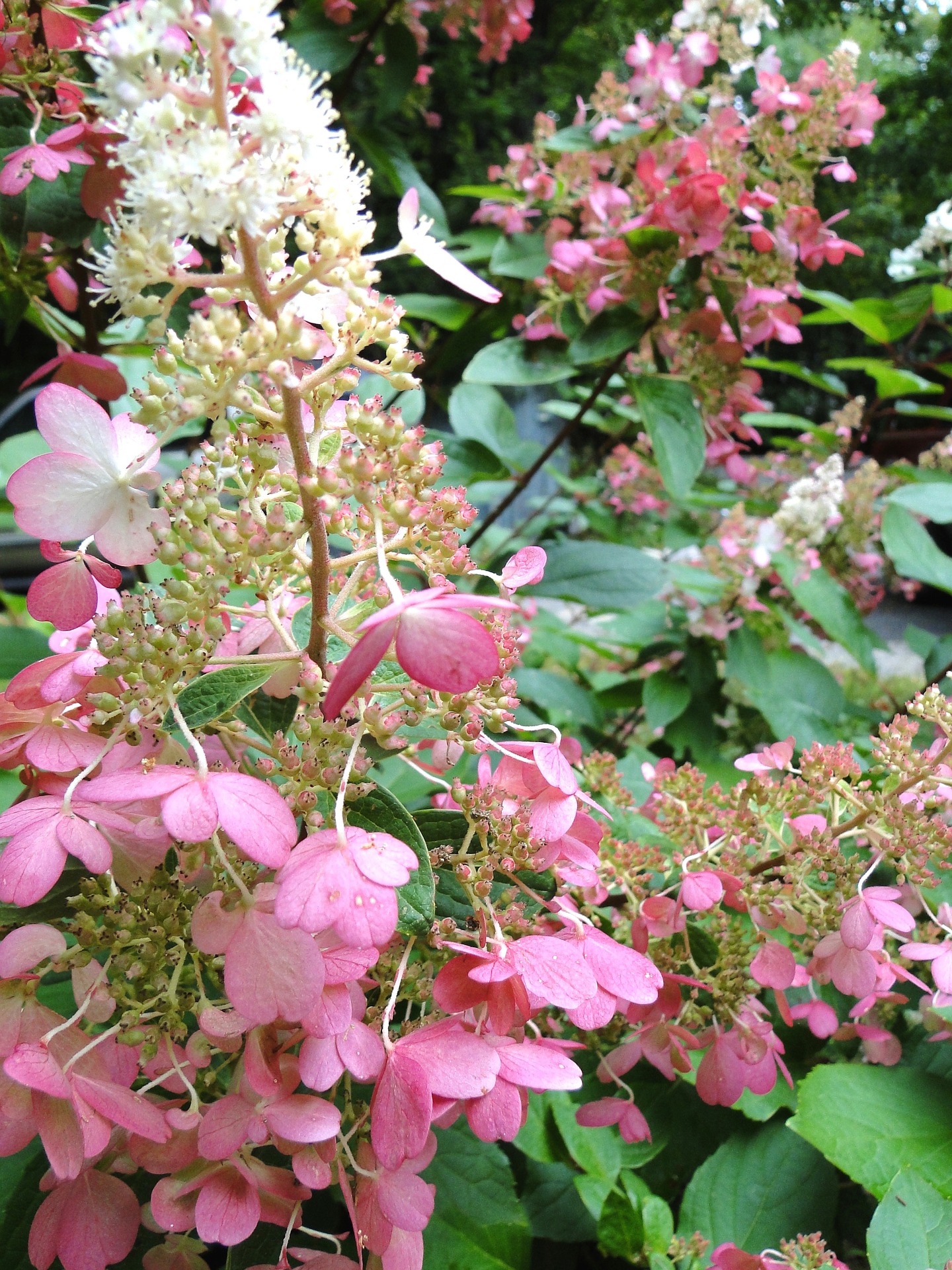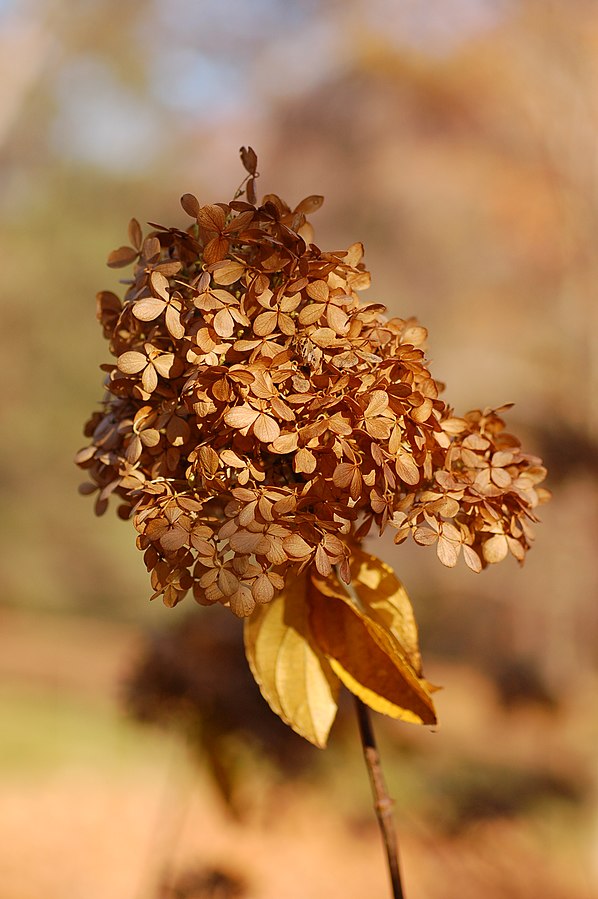There are many kinds of hydrangeas, and we love all of them for the landscape. Yet it seems like the blue and pink mopheads and the dramatic Annabelle hydrangeas seem to take the spotlight when we think of hydrangeas. Possibly the least well-known, but still very widely used, is the panicle hydrangea, known for its excellent winter hardiness, strong branches, and mid-to-late summer cone-shaped flowers.
Panicle hydrangeas tend to be better known by their variety name than their species name. Quickfire and Limelight, and their dwarf versions Little Quickfire and Little Lime, are some of the best known varieties, but there are many others that are readily available. One of the most interesting features of the blooms is that they tend to change color over time. Depending on the variety, the flowers (technically modified leaves called bracts) may start as green or white or pale pink, and then darken to deeper pinks and mauves in the fall. One variety, Fire and Ice, turns to a deep scarlet late in the season. In the winter the flower cones dry and turn tan. Some choose to leave the dried blooms through the winter for added interest, and others trim them off for a tidier look. They can be dried and preserved for indoor decorations as well.
Common Name: Panicle Hydrangea, Hardy Hydrangea (often referred to by variety name)
Scientific Name: Hydrangea paniculata
Notable Varieties: 'Limelight' (blooms start as pale green, medium size), 'Little Lime' (dwarf version of 'Limelight'), 'Quickfire' (different pink and white shades of flowers, often all at once, medium), 'Little Quickfire' (dwarf version of 'Quickfire'), 'Pinky Winky' (looser blooms in shades of pink), 'Tardiva' (8-12' tall and wide)
Light: full sun to partial shade
Size: dwarf varieties as small as 2-3' tall and wide, medium-sized varieties typically 6-8' tall and wide, some varieties as large as 20' tall and wide are grown as small trees
Soil: tolerates wide range of soil types
Blooms: cone-shaped inflorescences of varying density in shades of pink and white from July-August, color changes throughout season
Other Notes: deer and rabbit tolerant, low-maintenance, often requires no pruning at all if the correct sized variety is used, flower heads can be dried and preserved







